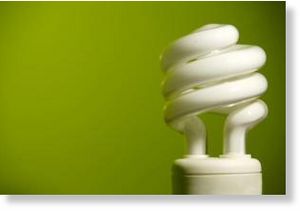Compact Fluorescent Lighting: Are We Trading Energy Conservation For Toxic Mercury Emissions?
Science Daily
Thu, 02 Oct 2008 15:49 UTCA team of Yale scientists has found that certain countries and some U.S. states stand to benefit from the use of compact fluorescent lighting more than others in the fight against global warming. Some places may even produce more mercury emissions by switching from incandescent light bulbs to compact fluorescent lighting.
© iStockphoto/Jon Schulte
Some places may produce more mercury emissions by switching from incandescent light bulbs to compact fluorescent lighting, a new study suggests.The study, which appears online October 1 in the journal Environmental Science and Technology, looked at all 50 states and 130 countries to determine the impact of fluorescent lighting on total mercury emissions in those regions.
Estonia, which relies heavily on coal-powered energy generation, tops the list as the country that would see the greatest reduction in mercury emissions for every incandescent bulb it replaces with a compact fluorescent light bulb (CFL). However, given its similar reliance on coal-fired plants, coupled with its huge population, China stands to reduce its mercury emissions by the greatest overall amount. Other countries near the top of the list include Romania, Bulgaria and Greece; within the U.S., North Dakota, New Mexico and West Virginia have the greatest potential to reduce their mercury emissions.
But much of South America, Africa, the Middle East and parts of Europe, along with Alaska, California, Oregon, Idaho and several New England states, would actually increase their mercury emissions by making the switch from incandescent to fluorescent lighting. The results depend on a complex relationship between a number of factors, including how dependent a region is on coal-powered energy generation, the chemical makeup of the coal used in those plants, and existing recycling programs for CFLs.
"Compact fluorescent lighting is an area where we're really pushing this alternative and all these policies are being enacted, but we're not looking at the potential unintended consequences of what we're doing," said study author Julie Beth Zimmerman, an assistant professor in Yale's Department of Chemical Engineering and its School of Forestry & Environmental Studies.
Touted as a greener alternative to traditional lighting, CFLs are about four times more energy-efficient than incandescent bulbs and last up to 10 times longer. This increased efficiency lessens the energy demand on generating stations powered by fossil fuels and reduces greenhouse gas emissions, as well as the amount of packaging and old light bulbs that end up in landfills. But unlike incandescent light bulbs, CFLs contain mercury, a toxin with potentially hazardous effects that can be released during manufacturing and disposal.
"It's always good to promote energy efficiency, but it's always a tradeoff," said lead author Matthew Eckelman, a graduate student in Yale's Department of Chemistry and the Center for Industrial Ecology. "You may get a lower energy bill at home, but you don't see the emissions or the runoff downstream."
While the researchers stress that their study isn't an excuse to ignore the energy problem and stick with old, inefficient technologies, they caution that nation-wide strategies such as recent bans on incandescent bulbs, adopted by several countries including the U.S., may be too general. "All sustainability issues are local," said Zimmerman. "We need to ask if we should be making decisions on a national level, or if this is something better left to local governments."
The authors of the paper are Matthew Eckelman, Paul Anastas and Julie Beth Zimmerman, all from Yale University.
Adapted from materials provided by Yale University, via EurekAlert!, a service of AAAS.

No comments:
Post a Comment